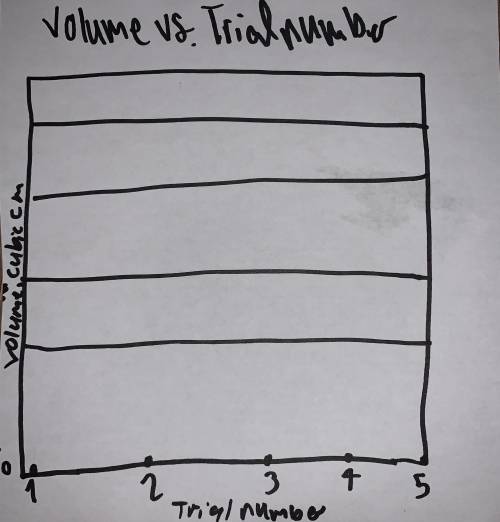1.3.3 Scientific Method Lab (Apex) Please Help!
(Procedure)
Scientific method question: What...

Biology, 13.10.2020 20:01 williamlindley2
1.3.3 Scientific Method Lab (Apex) Please Help!
(Procedure)
Scientific method question: What is the volume of air that my lungs hold?
1. Prepare the 100 cm x 2 cm strips of paper for later use.
2. Take one of the balloons and inflate it several times so you are sure you can inflate the balloon with only one breath.
3. Take a deep breath and inflate the balloon. Use the binder clip to hold the neck so no air escapes.
4. Make a measurement of the circumference of the balloon as follows: While holding the neck, wrap the paper strip around the balloon at its widest part and mark where the strip overlaps.
Figure 2
5. Let the air out of the balloon. Measure the length of the strip, up to where you made a mark in Step 4. This measurement is the circumference. Record it in Table 1.
6. Repeat the process outlined in Procedures 3-5 two more times.
7. Solve for the balloon volume using the equation below where:
volume = v
circumference = c
c^3 6π2
6π2
Record your answers in Table 1.
8. Find the average of the volumes and record it in the Table.
9. Plot the volume as a function of trial number in the graph area provided.
Questions for Scientific Method
Table 1
Circumference
Trial #1 58.42 cm
Trial #2 54.61 cm
Trial #3 50.8 cm
Volume
Trial #1 3366.92
Trial #2 2750.20
Trial #3 2213.80
Average 2776.10
Fill out the graph.
Answer questions.
(Graph questions)
1. Look at the volume values. Are the volume values larger or smaller than you expected? Explain your answer.
2. Are the volume values similar to each other, or are they quite different? Explain why you see what you see. If they are similar, explain why. If they are different, also explain why.
3. Does the volume increase with trial number, decrease with trial number, or stay about the same? Explain why you think the results are the way there are. There are many possible reasons for the data trend you see. Give some that you think are reasonable.
4. This method of measuring the volume of your lungs is probably not completely accurate. What changes would you make if you did this type of experiment to make it more accurate?
5. How would you modify the hypothesis and repeat the experiment for improved or more complete results?


Answers: 3


Another question on Biology

Biology, 22.06.2019 00:30
Imagine that certain laws of physics could be ignored and you were able to travel vast distances in moments. now imagine that you traveled to an earth-like planet located light-years away that is known to support life. think about what you’ve learned in this unit and make an argument for what you think would be the dominant type of life form on this planet. consider whether a notochord is required for an organism to manipulate its environment and become a dominant creature.
Answers: 3

Biology, 22.06.2019 06:00
The empty trna moves off and picks up another matching amino acid from the cytoplasm in the cell. the anticodon of the trna, with its attached amino acid, pairs to the codon of the mrna, which is attached to a ribosome. this sequence is repeated until the ribosome reaches a stop codon on the mrna, which signals the end of protein synthesis. the ribosome forms a peptide bond between the amino acids, and an amino acid chain begins to form. when a second trna with its specific amino acid pairs to the next codon in sequence, the attached amino acid breaks from the first trna and is bonded to the amino acid of the second trna.
Answers: 1

Biology, 22.06.2019 20:30
If there is another new infectious disease somewhere in the world, what do you think canadian officials should do
Answers: 3

Biology, 22.06.2019 22:00
Examine the following diagram. place the labeled layers in order from youngest to oldest.
Answers: 1
You know the right answer?
Questions

Mathematics, 23.10.2020 20:20


Physics, 23.10.2020 20:20

English, 23.10.2020 20:20


Mathematics, 23.10.2020 20:20





Biology, 23.10.2020 20:20



Mathematics, 23.10.2020 20:20

English, 23.10.2020 20:20


Mathematics, 23.10.2020 20:20


Chemistry, 23.10.2020 20:20

History, 23.10.2020 20:20



